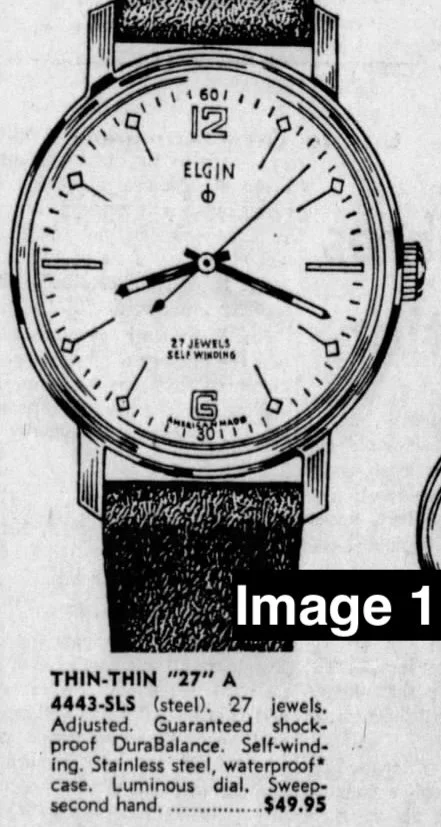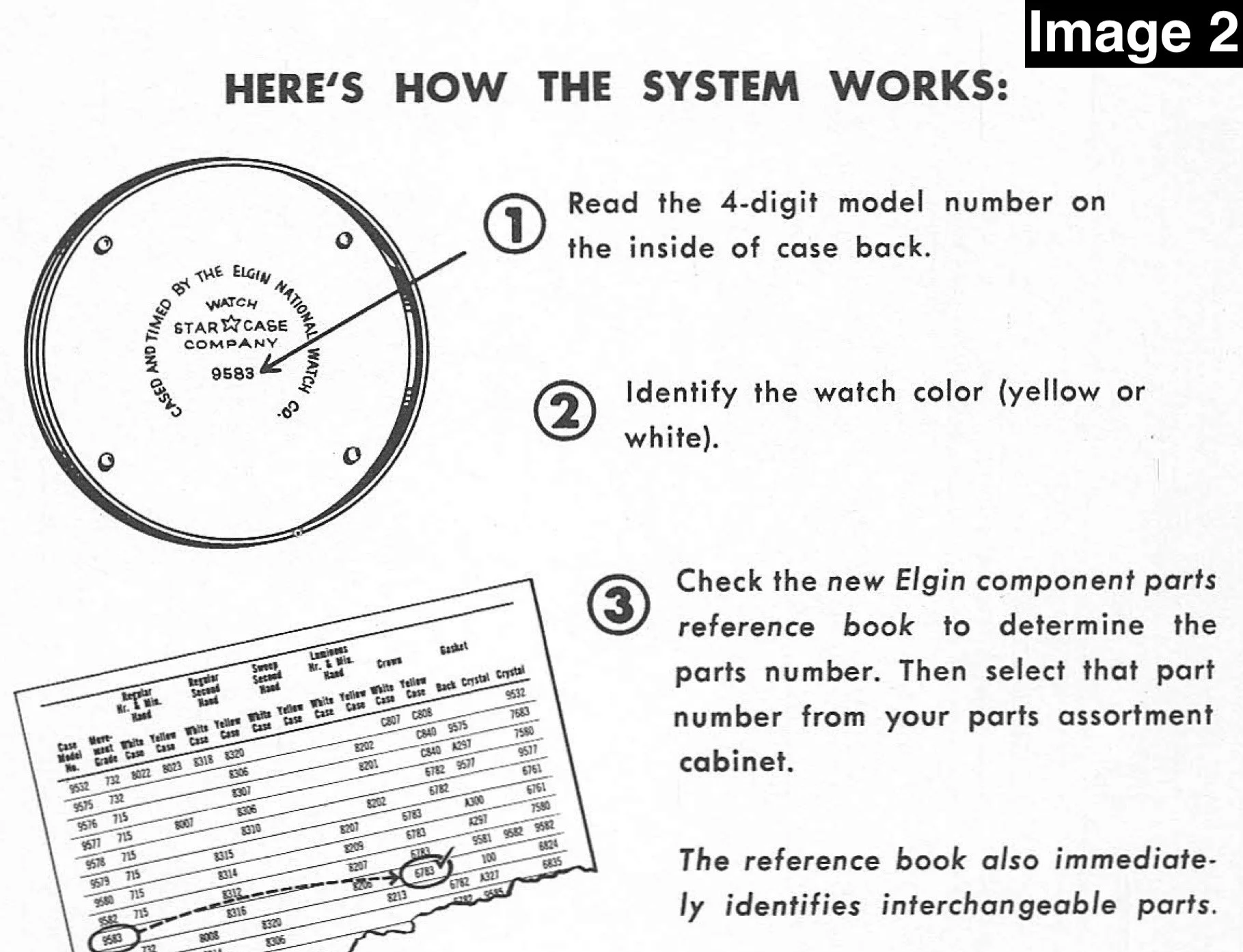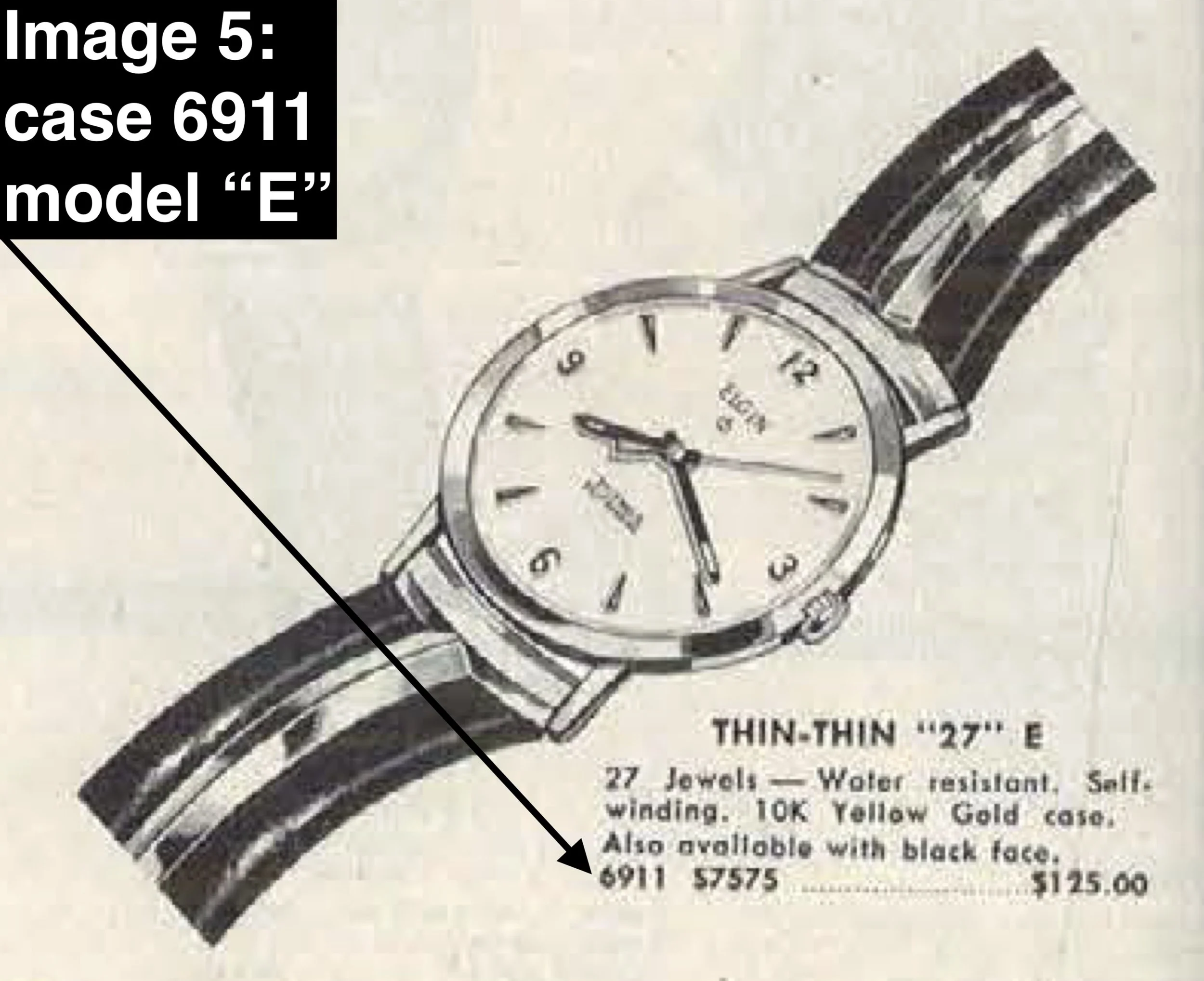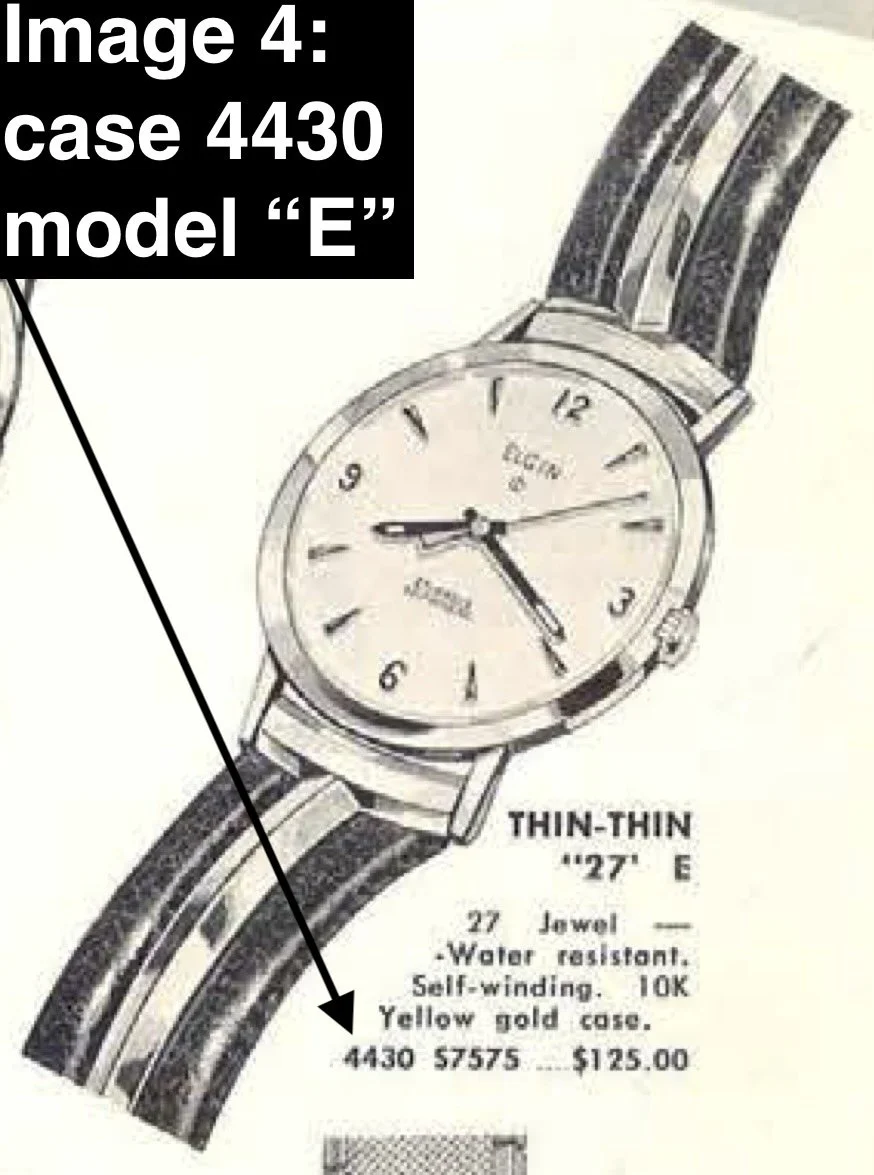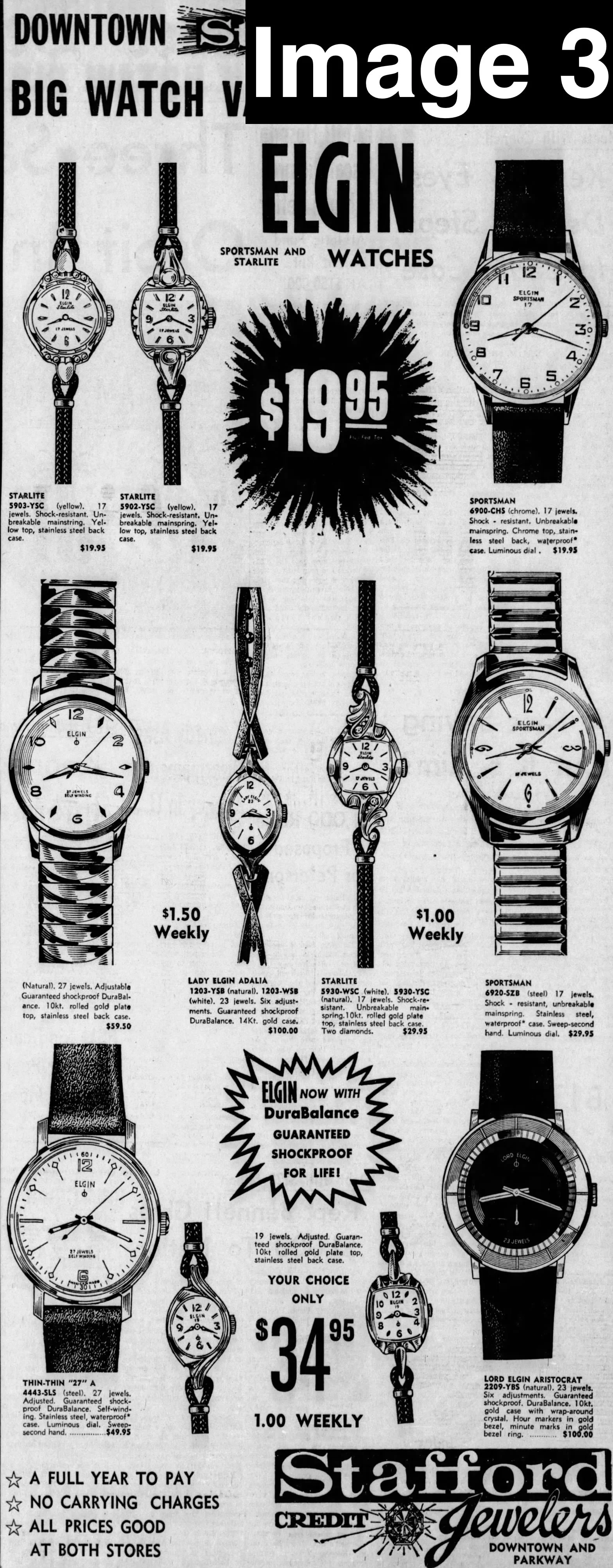The Numbering System for these Watches, Explained
In the late 1950s-early 1960s, Elgin used two different, but related, systems for identifying its watches — one for manufacturing/sales, and the other for watch repair. Each of these has its limitations from a collector’s standpoint. This website therefore uses a hybrid numbering system, as explained below.
1. Elgin used a simple method for watchmakers who needed to repair its watches, based on Elgin’s Cross Reference Chart. See Image 2 below. This method just uses the 4 digit case number and the case color (white or yellow). This was useful for finding the right color and size crown to repair a gold watch, for example. If the same case ref. has both yellow gold (Y) and white gold (W) versions, then this website also mentions the case color. The case ref. is the number shown in Image 2, with either Y or W added to the end: for example, 2344 Y or 4445 W. However, since most Elgin 27 and 30 jewel automatic watches only have one color case, the “Y” or “W” is usually omitted as unnecessary.
2. For manufacturing/sales purposes, Elgin used a different method: a 4 digit number followed by 3 letters (see Image 1 below). In Image 1, the code is “4443-SLS”. “4443” is the case number. “SLS” stands for “Steel,” “Luminous,” and “Strap.” The first letter “S” identifies the color or material the case is made of (here, Steel); the “L” identifies the type of dial (here, Luminous, meaning it has glow in the dark features); and the last “S” refers to the leather Strap the watch originally came with. Other examples of this method can be seen in Image 3 below.
For collectors, this code has shortcomings. The first letter of the code is sometimes specific (“S” for Steel) and other times vague (“Y” for Yellow - which can mean solid gold, gold filled, rolled gold plate, or even base metal). See Image 3 (below) and ref. 4450 on main page. In any event, the caseback of these watches identifies the specific material the case is made of, which is more precise. The bigger problem is the last two letters of the code. Case numbers 6852, 6853, and 9817 each have multiple different dials that are Luminous (“L”). So what specific dial variation are we talking about when we use “L”? It’s unclear. The last letter (“S” for leather strap, or “B” if it came with a metal band) is not useful either. Without the original box/papers, it’s impossible to know whether the watch originally came with a metal band or leather strap.
3. The system used on this website does 3 things:
• First, it groups watches together into natural “families” based on closely related case and dial designs, materials, sizes, and marketing by Elgin. For example, case ref. 6853 pulls together case refs. 4443 and 4449 into one “family” covering Elgin 27 jewel models “A” and “M”. This approach is based on evidence and common sense. But this also means we sometimes need to separate somewhat related watches. For example, case refs. 4450 and 4454 are not grouped into the same “family” even though Elgin referred to both as 27 jewel “N” models, because they use cases with completely different designs, materials, and sizes.
• Second, it takes seriously the observation that within a single “family,” Elgin used watch dials interchangeably in different (but closely related) case numbers. Take for example Elgin 27 jewel model “E”, which includes case refs. 4430 and 6911. Elgin used the same model “E” dial in both case refs. 4430 and 6911. See Image 4 and Image 5 below. Another example is 27 jewel model “D”, in which Elgin used the same dial in case refs. 6851 and 4441. See main page ref. 6851.1. A further example is the identical dial used in 27 jewel model “A” in case refs. 6853 and 4443. See main page case ref. 6853.4.
• This means we only need to (1) know the case number and (2) look at the dial to identify the watch. The “dial” part of the number within a “family” will always be the same regardless of case number. For example, if two watches with case numbers 6851 and 4441 have the same dial, the final number will always end the same: 6851.x and 4441.x, with number “.x” at the end referring to the same dial (e.g., 6851.2, 4441.2).
To be clear: watch dials in 27 / 30 jewel series are not interchangeable outside of these closely related “families”. One cannot just take a dial from one watch and put it in an unrelated case and call it a new variation. Evidence is required to establish the legitimacy of any particular case / dial variation, and where we’re unsure, we need to explain our reasoning.
